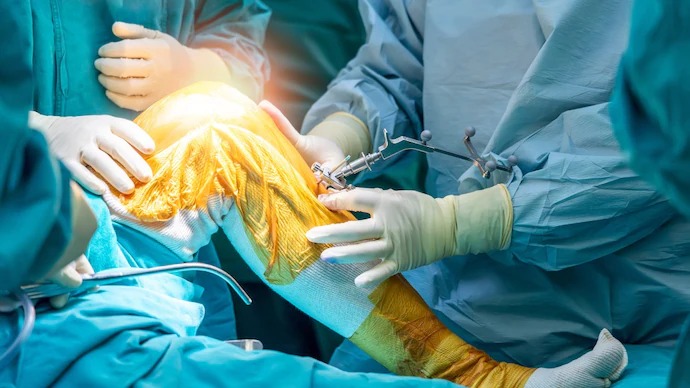
Follow WOWNEWS 24x7 on:

Robotic knee replacement surgery is rapidly gaining acceptance across India and globally, not as a marketing gimmick but as a transformative advancement in orthopedic care. Despite its growing popularity, misconceptions persist—often deterring patients from considering a procedure that could significantly improve their mobility, recovery, and long-term joint health.
Here’s a detailed look at the five most common myths surrounding robotic knee replacement surgery and the facts that debunk them.
Key Highlights From the Medical Community
- Robotic knee replacement is not autonomous; the surgeon remains in full control
- The technology enhances precision, reduces recovery time, and improves implant alignment
- Suitable for patients of all ages, including elderly individuals and those with complex joint conditions
- Studies show reduced postoperative pain and faster rehabilitation compared to conventional methods
- Robotic surgery is a validated clinical tool, not a promotional tactic
Myth 1: The Robot Performs the Surgery
Fact: The most widespread misconception is that robotic surgery replaces the surgeon. In reality, the robot acts as a precision tool, guided entirely by the surgeon. It assists in making accurate bone cuts, aligning implants, and balancing the knee joint. Think of it as a GPS system—it provides guidance, but the surgeon drives the procedure.
Myth 2: Robotic Surgery Is Only for Younger Patients
Fact: Robotic knee replacement benefits patients across age groups. Elderly individuals, especially those with deformities or prior surgeries involving implants, can gain significantly from the precision and reduced trauma offered by robotic systems. The technology adapts to complex anatomical variations, making it ideal for challenging cases.
Myth 3: Recovery Is the Same as Traditional Surgery
Fact: Robot-assisted procedures often result in faster recovery and better early functional outcomes. The technology allows for minimal soft tissue disruption and highly accurate bone preparation, which reduces pain and accelerates rehabilitation. Many patients begin walking with minimal assistance within 24 to 48 hours post-surgery.
Myth 4: Robotic Surgery Takes Longer and Is Riskier
Fact: While initial procedures may take slightly longer due to team familiarization, the time difference becomes negligible with experience. Importantly, robotic systems reduce the risk of errors such as implant misalignment, which can affect long-term outcomes. Studies show no increase in complication rates and, in some cases, fewer surgical revisions.
Myth 5: It’s Just a Marketing Ploy
Fact: Robotic knee replacement is grounded in clinical merit. It improves surgical predictability, especially in complex cases, and enhances implant longevity. The technology is not a promotional tool but a validated advancement in orthopedic care. Surgeons emphasize that outcomes depend on appropriate technology used by skilled hands—not hype.
Clinical Perspective and Patient Outcomes
Dr Pankaj Walecha, director of hip and robotic knee replacement at Sarvodaya Hospital, Faridabad, notes that robotic systems have revolutionized joint surgery. Patients experience:
- Less postoperative pain
- Reduced need for analgesics
- Quicker return to daily activities
- Improved joint function and implant durability
Hospitals across India are increasingly adopting robotic platforms, and patient satisfaction rates are climbing as awareness improves.
Conclusion: Technology That Serves the Patient
Robotic knee replacement surgery is not a futuristic experiment—it is a present-day reality that offers tangible benefits. As more hospitals integrate robotic systems and surgeons gain proficiency, patients can expect safer, more precise, and faster recoveries. The myths surrounding robotic surgery are steadily being replaced by informed choices and successful outcomes.
Sources: India Today Insight, Manipal Hospitals, Sarvesh Health City




